Getting your Rubber Plant, Fiddle Leaf Fig, or other Ficus to branch is so easy, but it can be a little stressful emotionally, so I’m here to talk you through it step by step!
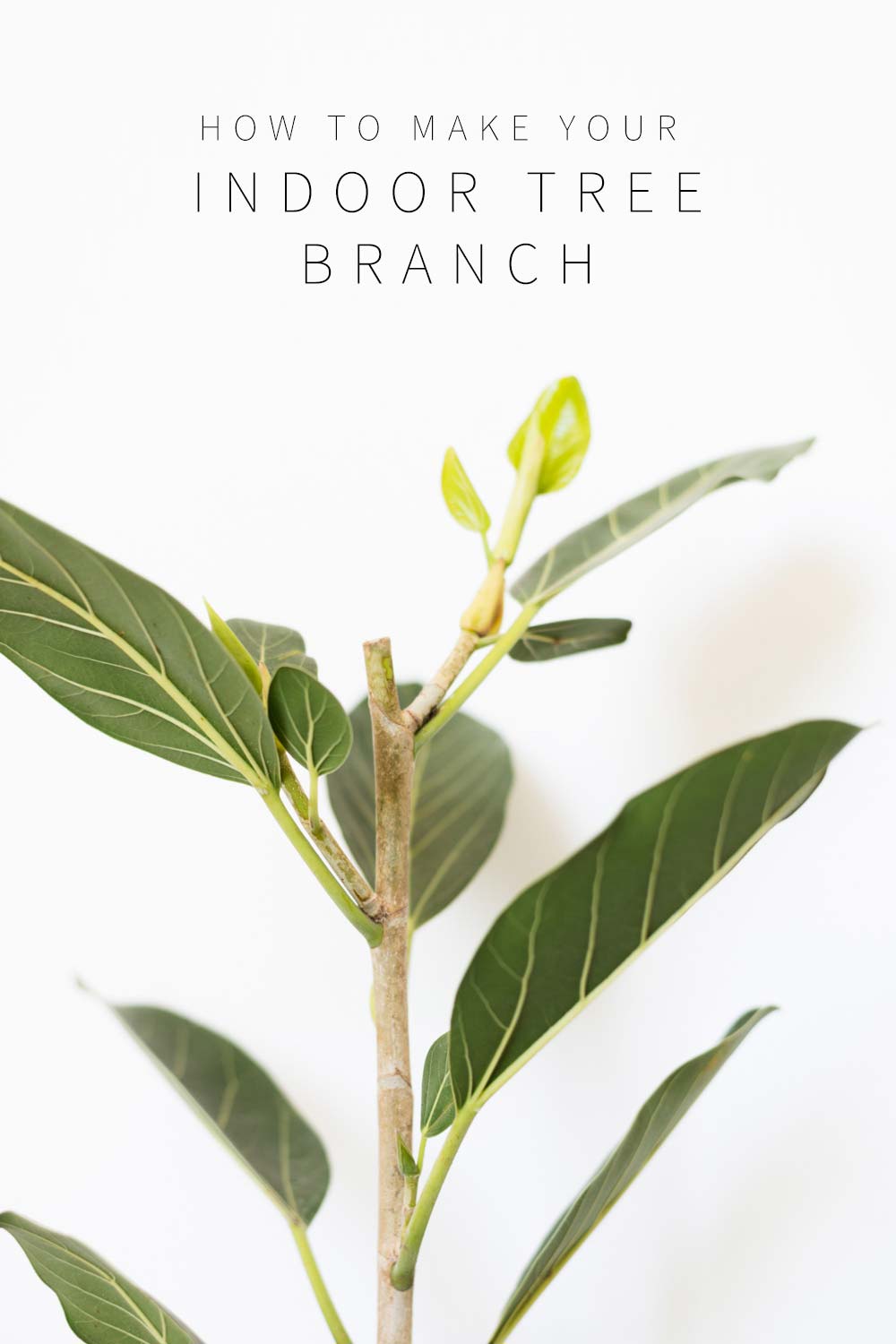
A lot of ficus varieties like the Rubber Plant and Fiddle Leaf are not natural branchers. I’m sure you’ve seen them grow in tall singular columns with one stalk right?
My Rubber Plant has grown just like this! See 3 stalks, zero branches.
But forcing them to branch is super simple. You’ve just got to inflict a little damage. And it feels like you’re the meanest plant parent in the entire world, which is why I’m here, to talk you through it!
It’s super important to make sure that you’ve got a healthy plant to begin with. Trying to do this to a plant that is unhealthy might cause too much stress and it will give up the ghost.
How does it work?!
Plants have little bumps on them called Nodes. Nodes are where new growth forms. On ficus, the node is right above each leaf. They are easy to spot because at the same place the node is, there is a thicker ring that runs around the stalk.
When you remove the new growth, the node(s) closest to the top will start to grow and become a branch.
Technique #1 Pinching Back New Growth
The quick and easiest way to do this is to find the new growth on your stalk. See that leaf sheath? That is exactly what we’re looking for. When a plant has a new growth tip on it, it sends inhibitors down to the nodes that keeps them dormant. Once the new growth is gone, the nodes are free to start new growth.
To do this, simply pinch the base of the new growth and snap it back.
The tree will leak white sap that can irritate sensitive skin, so keep that in mind.
The tip will develop a callous, and the nodes will start growing within a few weeks/months.
Because you are just pinching off a new leaf there isnt a node attached, which means that you cant propagate it.
Technique #2 Cutting Back New Growth
Cutting back new growth is a little different than pinching it back. When you are cutting back new growth it leaves you with pieces that you can then propagate.
Tip: Learn to Propagate Your Ficus
Step 1
To do this, use a sharp sterile pair of pruning shears and cut about 1/2″ above a leaf/node. You dont want to cut it too close to the node, but leaving too much will make the end of the new cut shrivel up and it can become rotted.
The tip of this Audrey Ficus was cut off and the plant has started to branch from the nodes.
It’s also branching from nodes that are lower on the tree where leaves have been lost.
Technique #3 Notching
Unlike the other 2 options, Notching doesnt remove any part of the tree. Instead it’s a strategic cut or score made on the trunk or branch of a plant.
Step 1
Find a spot on your tree between 2 nodes.
Step 2
Using a sharp knife or pair of pruning sheers, make an angled cut that goes about 1/4 of the way through your trunk. If the knife isnt sharp enough, you’ll just be creating a scar and the plant wont branch.
Step 3
Mark that area with a small piece of ribbon and check on the closest nodes frequently. You should see new growth after a month or so!
Which technique is right for my tree?
Technique #2 leaves the branching entirely in your hands. If your tree is almost hitting the ceiling, using the pinching technique isnt going to be super helpful, because it will just create branches at the ceiling height.
Do you have a small plant that you are starting off
Pay attention to the direction of the node. You want to make as calculated cuts as possible. Is the highest node that will grow once you’ve made your cut facing in or away from the center of the tree? The direction of the node will determine the direction of the branch growth.
Sprouting more than one branch
Pruning your tree during growth season is your best bet. When a tree is actively growing it will send out more than one shoot and the plant will recover from the stress of pruning quicker. If you prune your tree during a dormant season (like winter) it will likely only send out one branch if that. Keep that in mind so that your plant can still thrive.
Giving your plant the absolute best light is a game changer, but the best thing you can do is feed them. Plants need nutrition, just like humans! The absolute best fertilizer that you can use is Happy Happy Houseplant Plant Food. It is LIFE CHANGING. It comes in a cute bottle that you can keep on your counter, and you use it every single time you water. You’ll never forget to feed it because it’s so consistent! And it is an absolute miracle!! New growth galore!!
Any questions? Leave them below!!
Learn all about caring for your Rubber Plant here!
[mv_create key=”2″ layout=”circles” title=”The Essential Houseplant Master List ” type=”list”]

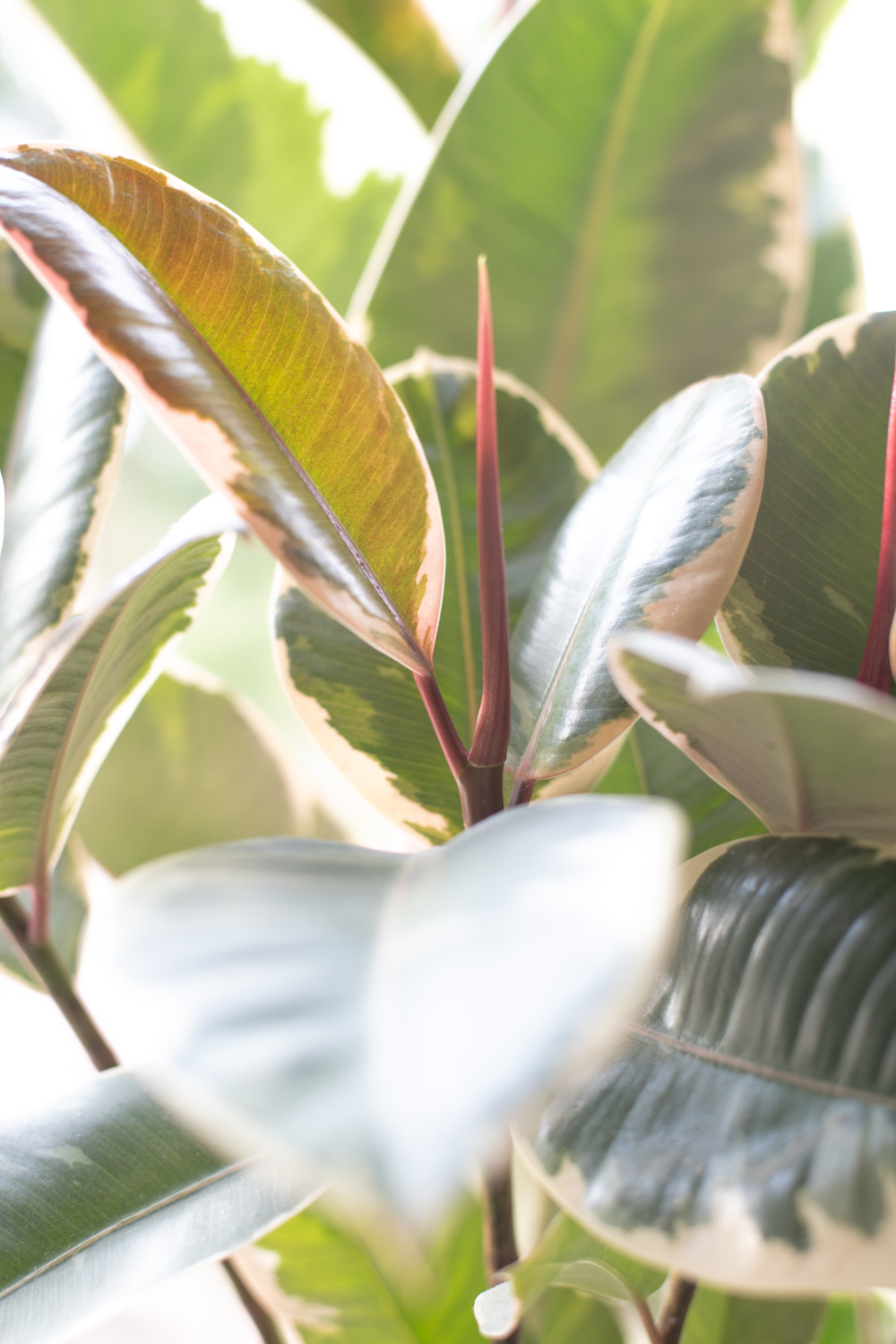
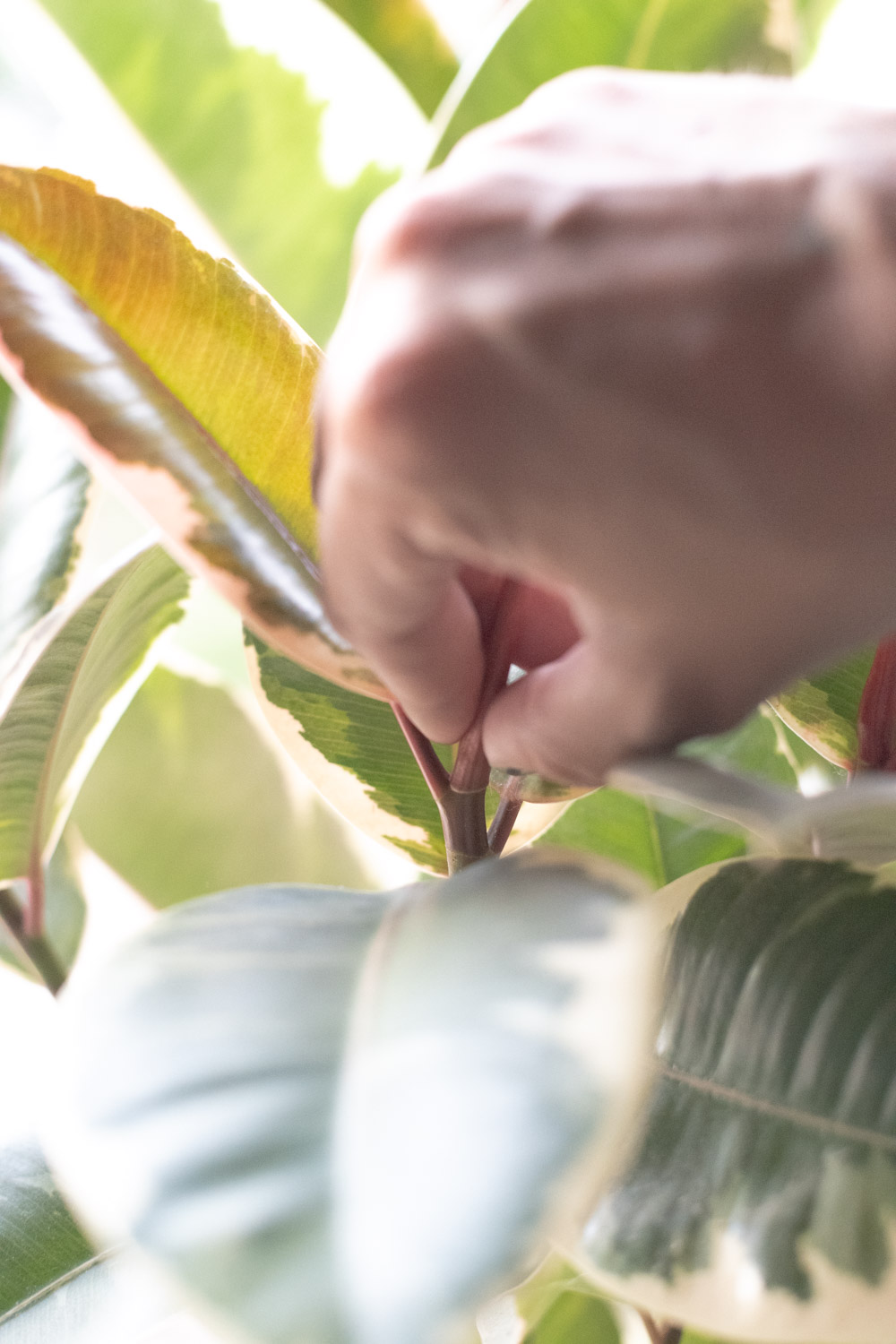
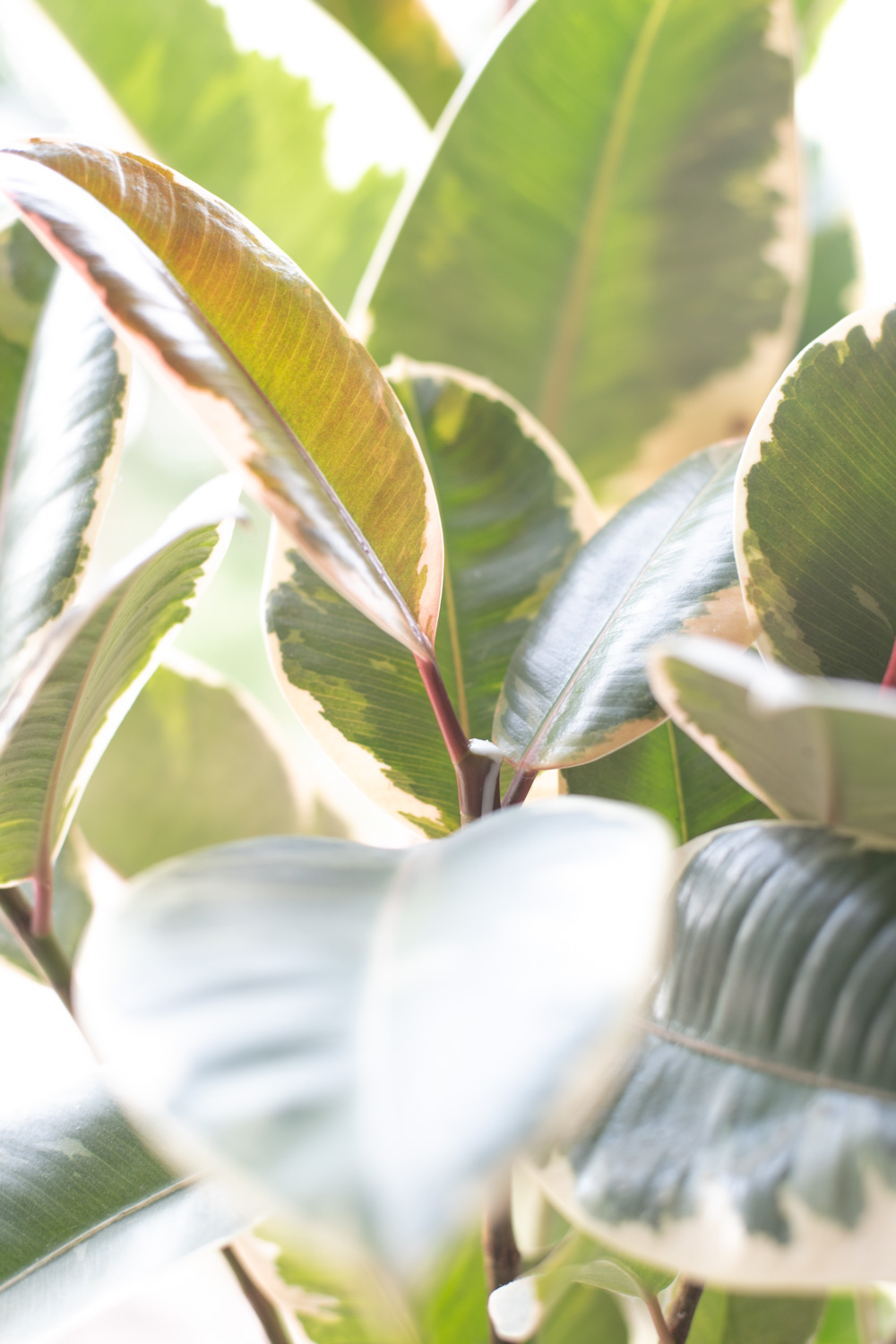
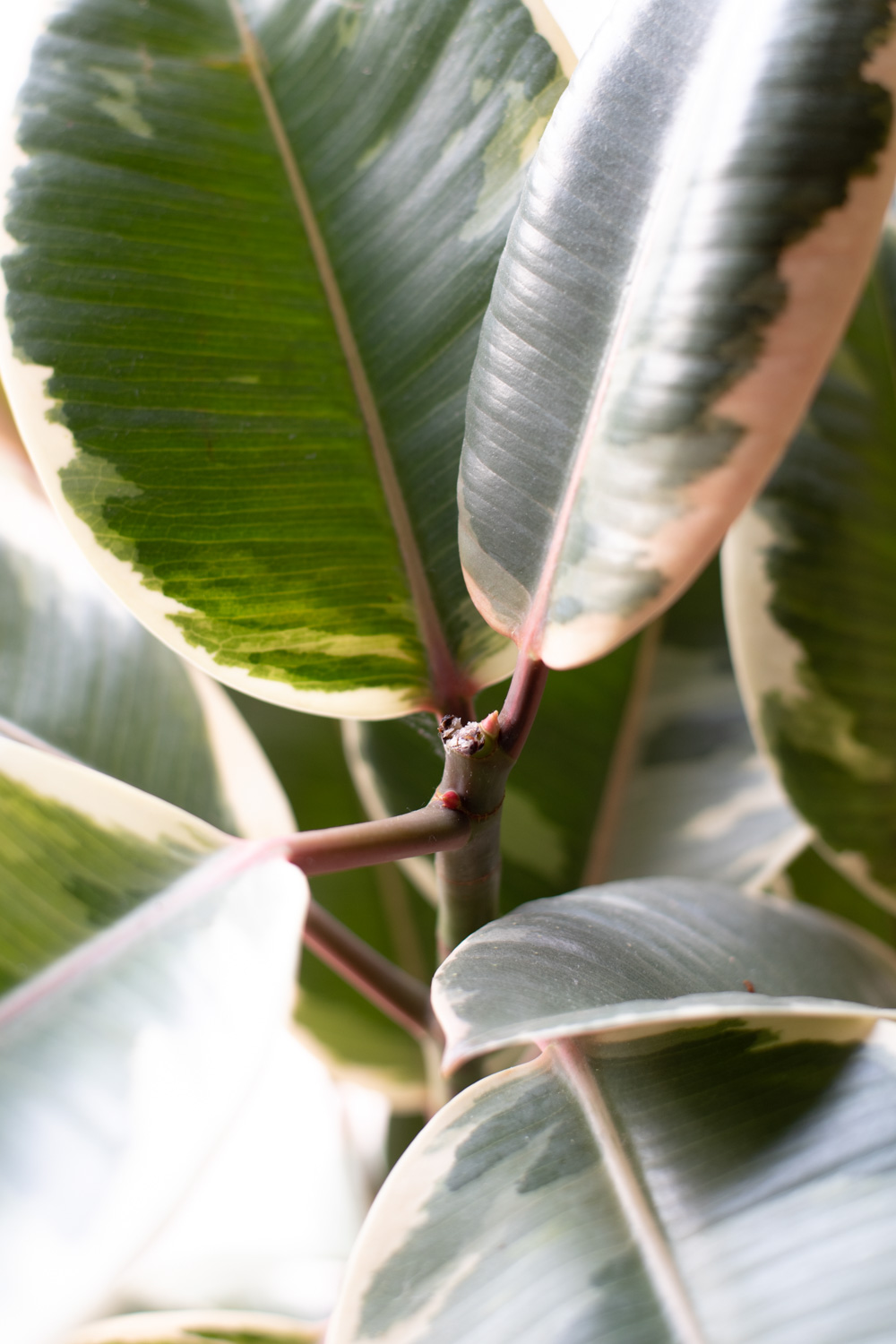
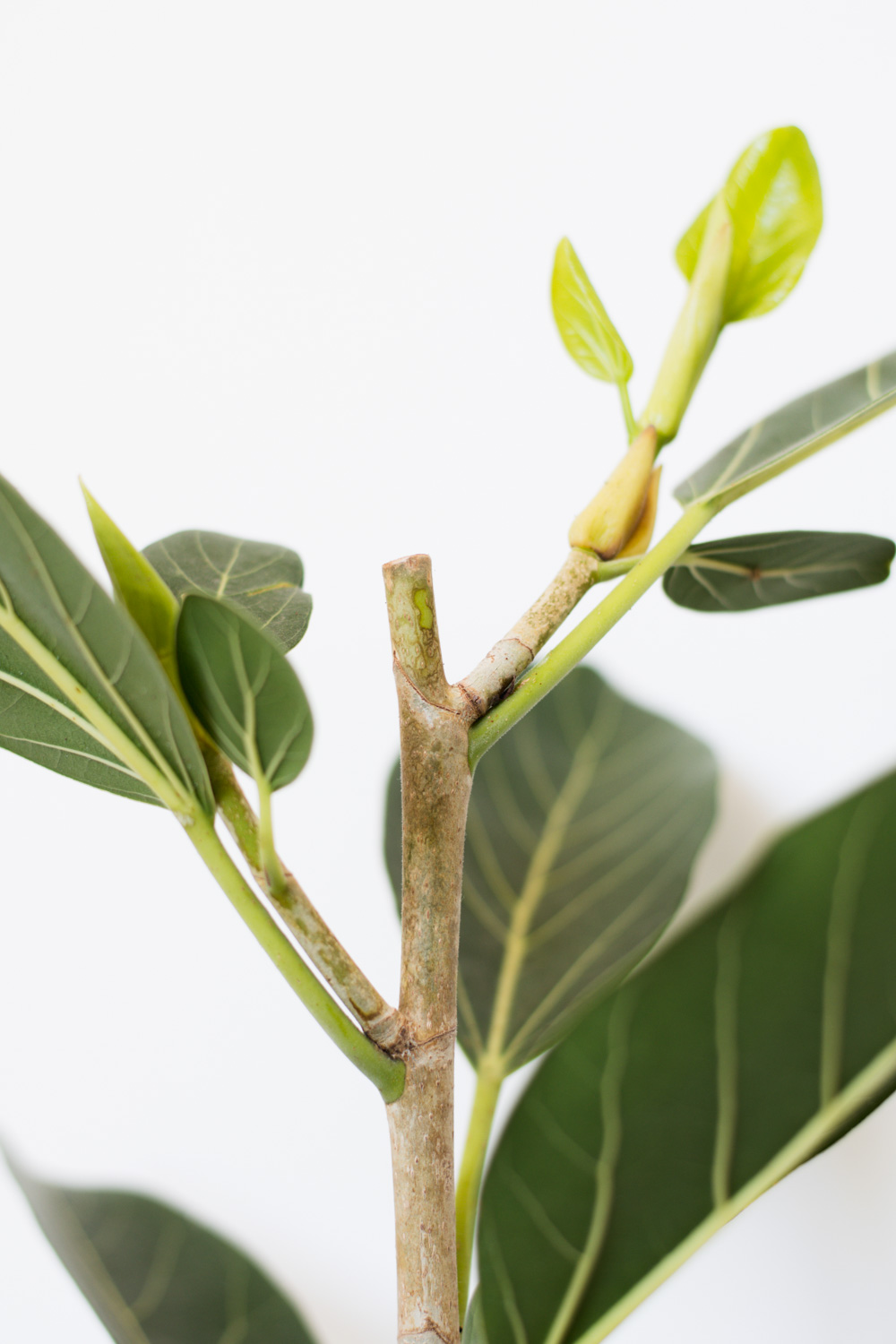
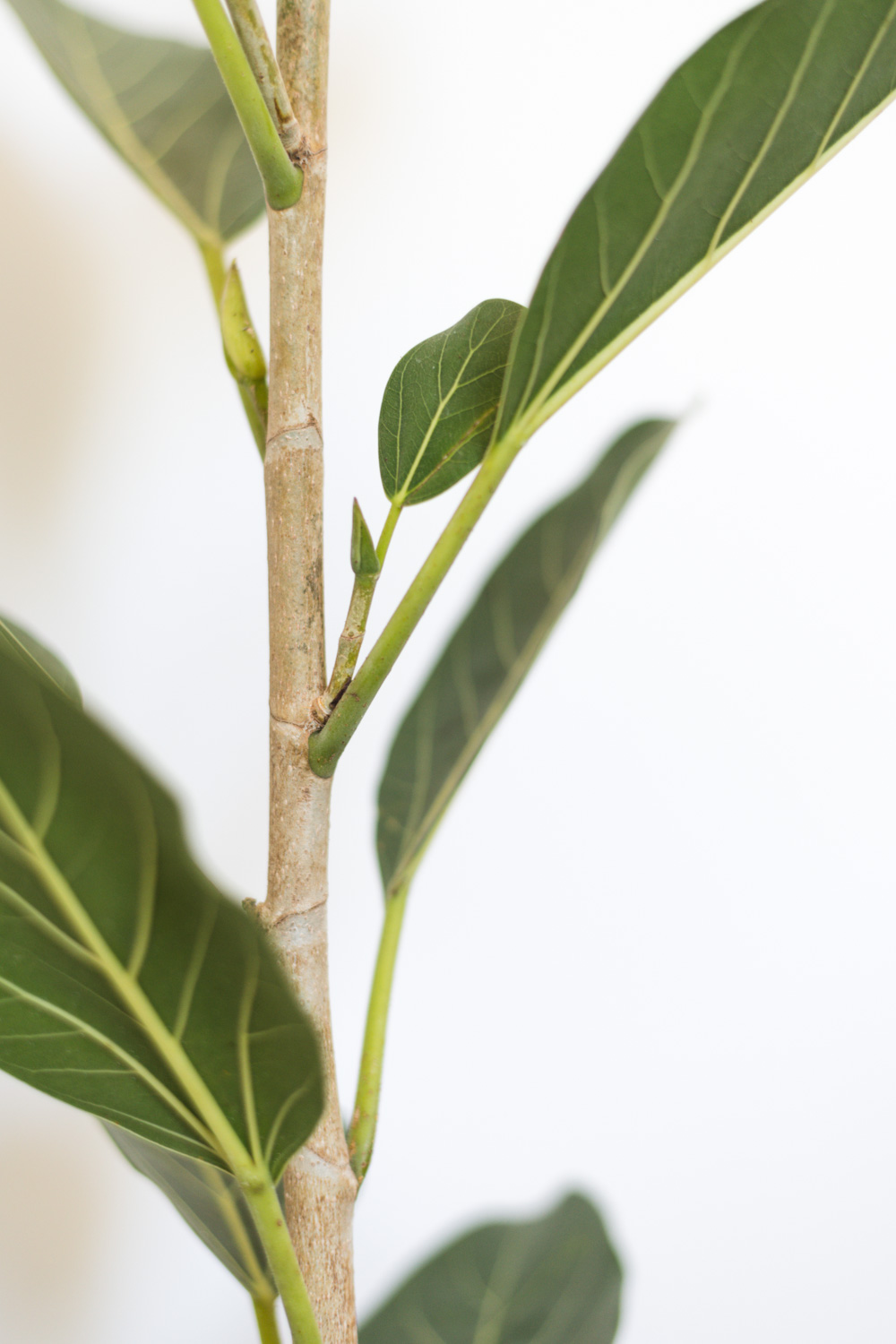
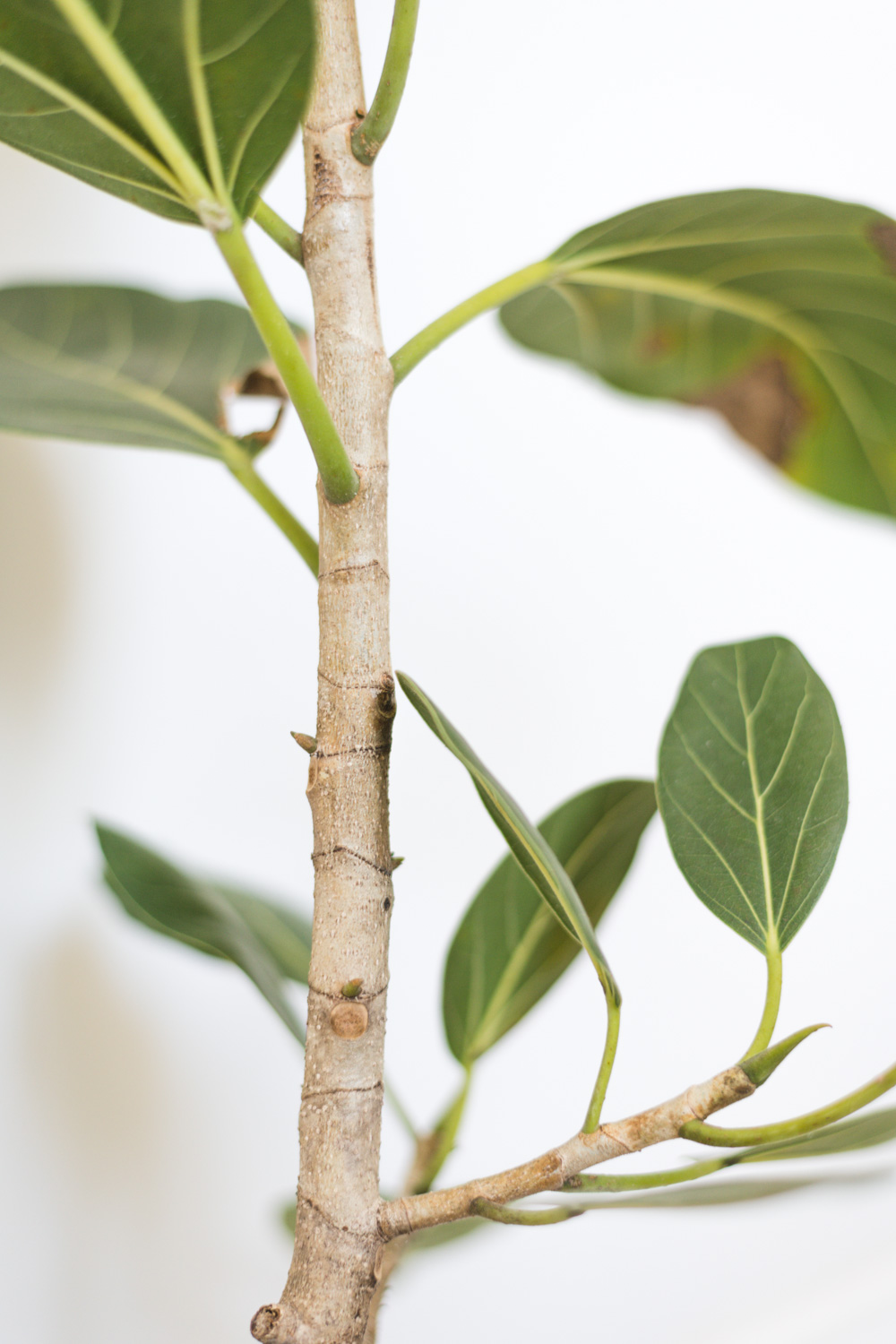

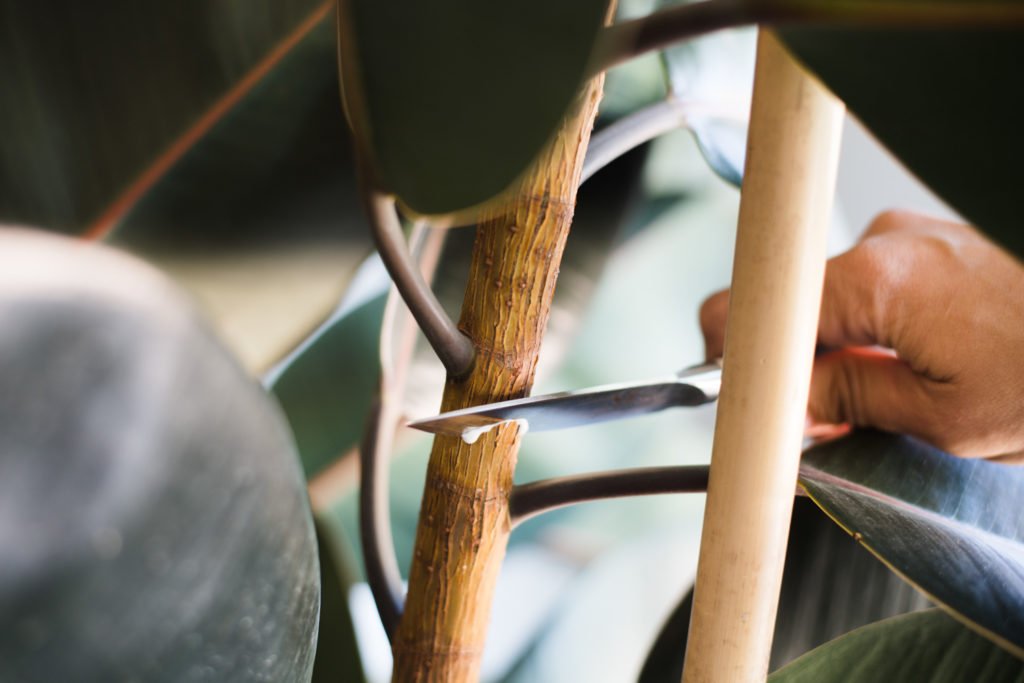
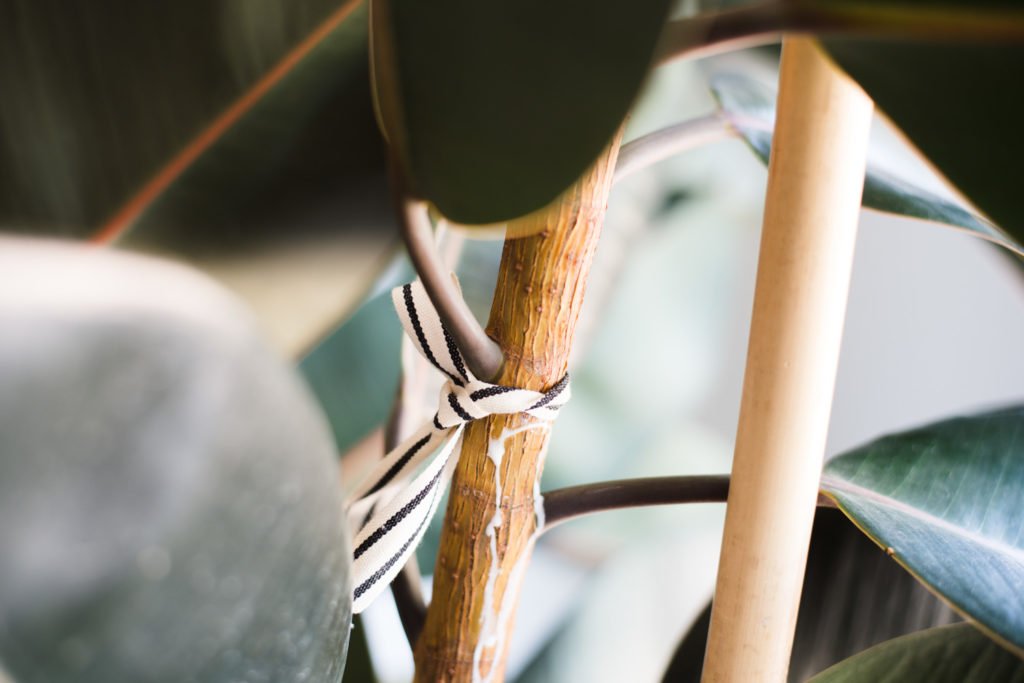
Hi! I recently inherited a rubber tree plant – it’s been in my house for just over a month and the two new growths haven’t opened into leaves yet. I would like to force it to branch out but I’m worried that if I do this before it’s acclimated to the space it will make it very unhappy. Advice? Thank you!
I would wait until it’s acclimated. You dont want to send it into too much shock.
I have a fiddle fig tree that has three branches that have all reached the ceiling. It’s healthy but there are patches on the tree where the leaves have fallen off. I’ve been looking for an article like this everywhere to know what to do. What are your thoughts? What do you think I should do?
For sure notch it!!
I have a fiddle leaf fig that’s about 7 ft tall, all of the lower leaves have fallen off over time and now I have this tall tree with a bunch of leaves at the top but it just shoots straight up. I’ve had it for 9 years and it was just a small plant then. Its not pretty and tree like the ones you see in magazines but this makes total since. Which method would you suggest using for it to branch out?
Hi Lindy!! I would say the notching method!
Mandi, thank you, thank you, thank you. It is really hard to find any information on Fiddleleaf Ficus or Rubber trees. I have one that lost all of it’s leaves over the winter and now it only has 2 puny leaves coming out of the top like Alfalfa’s hair. LOL I’m going to try the notching to develop new branches. It can’t hurt. I will also try the pinching on the new one I just bought to replace it.
Appreciate your help.
Did I miss your week 5 One Room Challenge Update? I’ve been enjoying watching the nursery unfold and keep checking back for the update. Isn’t Wednesday the day the updates are posted? Thanks!
Hi! I have a FLF that I got last summer. It is 4’ tall with three individual stems and two small but tall baby plants growing with it. No branches on any of the stems. Should I try to get each to branch? And which is the best way for a younger plant like this? Also should I repot and separate the babies? It’s healthy but can’t seem to hold moisture as I keep getting dry crispy brown patches on leaves no matter how much it’s watered. HELP! 😊
So notching will create branches? Can I make more than one notch at the same time? I was thinking of two notches so I can get two more branches
Just one at a time!
So you don’t want to branch until your FLF is pretty tall? Or do you start doing it when it’s small and then it grows taller like that? Do you trim off the lower leaves as it grows?? – Mine has leaves all down to the soil, so I think I understand the branching idea, but how does the tall leaf-less trunk happen?